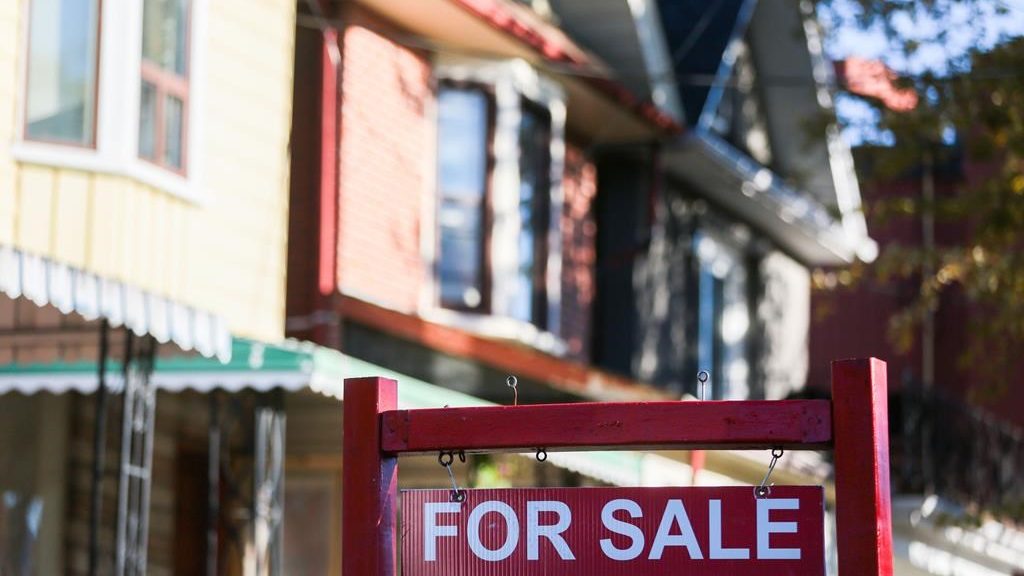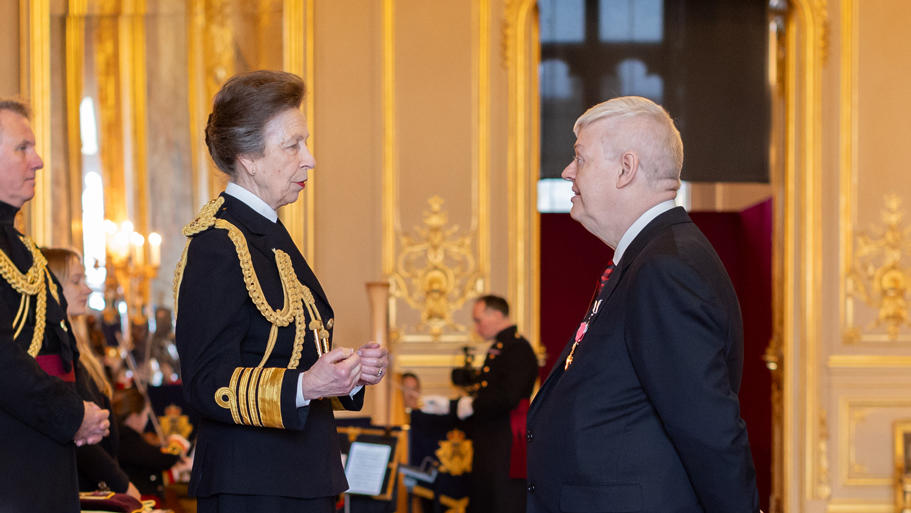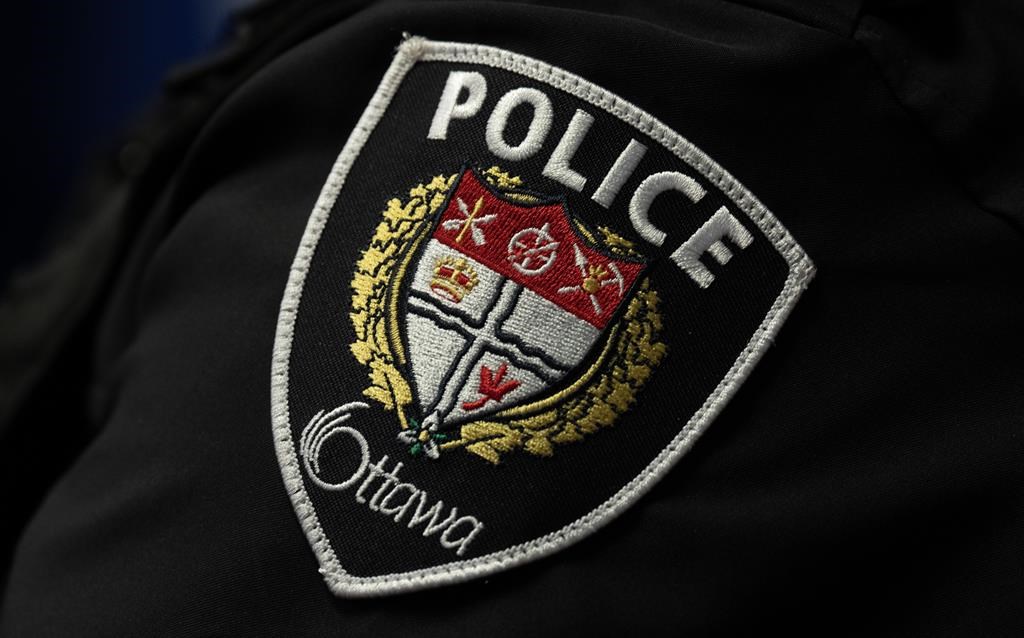Remember This? The Ottawa Nationals
Posted Oct 13, 2020 03:03:00 PM.
OttawaMatters.com, in partnership with the Historical Society of Ottawa, brings you this weekly feature by Director James Powell, highlighting a moment in the city's history.
October 11, 1972
Before the Ottawa Senators were reborn in the early 1990s, Ottawa was briefly home to another major league professional hockey team — the Ottawa Nationals.
And when I say briefly, I mean briefly.
The team was in existence in the nation’s capital for less than one season before the franchise moved. But for a few short moments, Ottawa was at the centre of a hockey revolution that witnessed the birth of the World Hockey Association (WHA) — the upstart professional hockey league that, for a time, challenged the National Hockey League’s (NHL) domination of major-league professional hockey in North America.
In the 1972-73 season, the WHA launched a new 12-team league, located mostly in smaller cities in the United States and Canada.
While the NHL had doubled in size from six teams to twelve in 1967, and had added two more teams in 1970, WHA backers thought there was still unmet demand for high-calibre professional hockey.
Not surprisingly, the new league faced many obstacles before the first puck was dropped. The absence of appropriate rink facilities was a major handicap that doomed the chances of many cities to acquire a franchise. The wonderfully named Miami Screaming Eagles plunged to earth when plans for a new arena fell through. The franchise folded, later becoming the Philadelphia Blazers. The Calgary Broncos also vanished before playing a game, only to be resurrected as the Cleveland Crusaders.
Ottawa wasn’t a first-choice city for a WHA franchise.
Doug Michel, who had purchased the 'Ontario franchise' for a WHA team, had wanted to locate in Hamilton. However, the story goes that Hamilton Mayor Vic Copps couldn’t come to terms with Michel over the construction of a new arena. Reportedly, Copps wanted the team to sign a 10-year contract for $500,000 per year before he would build a $5-million arena. Michel countered with $200,000 per year, but it was not enough.
Instead of Hamilton, Michel brought his franchise to Ottawa, and in mid-February 1972 the Ontario franchise became known as the Ottawa Nationals.
The following month, the team came to terms with the Central Canada Exhibition Association (CCEA) to play at the Civic Centre, the home of the Ottawa 67s, the city’s Major Junior A team. It was agreed that the Nationals would guarantee the Central Canada Exhibition Association $100,000 or 15 per cent of the gate, whichever was greater, for each year of a three-year contract.
The amount of the performance bond would decline through the season as money was paid to the CCEA. The CCEA would also receive 15 per cent of television money for games broadcast from the Civic Centre. The Nats wanted a 3-year contract even though potentially the CCEA couldn’t honour it as its lease for the city-owned Civic Centre expired in April 1973.
Despite being playerless and coachless, the Nationals launched a season ticket campaign with prices ranging from $3.50 per seat, or $136.50 for the 39-home game season, for C level seats to $6.50 per seat, or $253.50, for ice-level, AA seats. The team hoped to sell roughly a third of the season tickets to corporations. By the end of March 1972, they had sold 275 seats. They didn’t sell many more.
The logo of the Ottawa Nationals was described as a combination of both traditional and contemporary features — a product of eight artists who came up with 400 different designs. The winning logo was a red 'O' and 'N' with a superimposed white maple leaf, and a blue border in the shape of a hockey arena, slightly slanted in an “on-the-go” fashion.
Having got a city, an arena, and a logo, the next step was to find players and a coach by the start of the 1972-73 season. The Nats, indeed the entire WHA, hoped to sign roughly one-third of its players from the NHL, a third from graduating junior hockey ranks, and a third from universities and Europe.
To gain credibility, WHA teams began signing star NHL players whose contracts had expired, offering huge multi-year salaries. Bernie Parent, the star goal tender from the Toronto Maple Leafs, signed a contract with the Miami Screaming Eagles (later the Philadelphia Blazers) for reportedly $750,000. The entire league chipped in to acquire the legendary Bobby Hull for a $2.5-million contract over 10 years, of which $1-million was paid up front. Derrick Sanderson, the flamboyant centreman from Boston, signed with Philadelphia for an eye-popping $2.6-million USD.
The Nationals too had their eye on a number of star players, including New York Ranger Brad Park. Team owner Doug Michel thought Park was worth at least $250,000. Michel also began talking to Toronto star Dave Keon.
Needless to say, NHL owners were furious with what they saw as talent poaching. It definitely hurt them in the pocket book. The average NHL salary in 1972 was only $32,500 (equivalent to roughly $200,000 in today’s money). The advent of the WHA meant that the balance of negotiating power had shifted dramatically in favour of players.
To stop the hemorrhaging of talent, the NHL tried to tie players in legal knots, arguing that under the reserve clause of their contracts they could not sign with a WHA team even if their NHL contracts had expired. This attempt ultimately failed in court.
Despite the Nationals’ best efforts at finding talent, it wasn’t until June that the club signed its first two players: Bob Leduc, 28, a centreman who had played with the Providence Reds of the American Hockey League, and Ron Climie, 22, a right-winger from the Kansas City Blues of the Central Pro Hockey League. Neither were household names. A few days later, the team signed Garry Hull, the less-known middle brother of Bobby and Dennis Hull, to a conditional contract — conditional that he could make the team. Gerry Hull had played in Dallas in the Central Pro League in 1970 before leaving hockey to manage a farm near Milbrook, Ontario.
Ottawa sportscasters were not impressed. Jack Kaufman of the Ottawa Citizen said the team was “scraping the bottom of the barrel in an effort to fill rosters.”
Stretched for money, Nats’ owner, Doug Michel, sold 80 per cent of the club to Nick Trbovitch of Buffalo, N.Y. in July.
With an apparent cash infusion into the team, the Nats began signing players, negotiating contracts first with two former Oshawa Generals Juniors, Mike Amodeo and Tom Simpson, and then with Bob Charelbois a four-year veteran with the Phoenix Roadrunners in the Western Hockey League. They were followed by NHLers, Wayne Carleton, who had played with Toronto, Boston and California, Mike Boland of the L.A. Kings, and Guy Trottier from the Toronto Maple Leafs.
Among the last to sign were veteran goaltender, Les Binkley, formerly with the Pittsburgh Penguins, and coach Billy Harris, a friend of the team’s general manager, Buck Houle. Harris was the former coach of the Swedish national hockey team.
The Nats also thought they had corralled Dave Keon for a cool $1-million, multi-year contract, however, after accepting $50,000 from the team — which Keon said was a negotiating fee and the Nats said was a down payment on his salary — Keon re-signed with the Leafs. This set in motion law suits that were to last for years to come.
Training camp started mid-September in the Hull arena. Forty-seven rookies were in camp trying out for the team. The former NHLers didn’t arrive until October 1, the day following the expiry of their NHL contracts.
That night, without any practice as a team, the Ottawa Nationals took to the ice at the Civic Centre for their first exhibition game against the Philadelphia Blazers. In front of a crowd of just over 7,000 (said to have been generously reported) the Nats were downed 3-1. Ottawa went on to lose all five of their pre-season games.
The WHA launched its first official league game at the Civic Centre on October 11, 1972, with a game between the Ottawa Nationals and the Alberta Oilers amidst all the whoopla one would expect.
The game was carried live over CBC television. Congratulatory telegrams were received, including one from Prime Minister Trudeau, bagpipes swirled, and special souvenir programs handed out. In a pre-game show, peewee hockey players circled the rink, throwing WHA orange pucks into the stands.
The WHA had originally tried using orange pucks to distinguish the league from the NHL. This was a bad idea since the orange dye reportedly affected the pucks’ solidity. When the frozen pucks were hit during play, they became distorted, sometimes turning potato shaped. Goalies also had a hard time seeing them. The colour was changed to a dark blue. But the orange pucks made for nifty souvenirs.
Lobbing pucks into the stands turned out to be another bad idea. The crowd of only 5,006 fans, half of whom were minor hockey players who had received free tickets, began throwing the orange pucks back onto the ice. Naturally, the peewee players returned fire.
Matters deteriorated when balloons, which were fastened to poles, didn’t release properly; the knots suspending them were too tight. Two poles fell over when attendants tugged, bringing down their bagged balloons onto the ice which led to a free-for-all as the peewee players began popping them. Finally, an announcer had to tell the kids to get off the ice.
The opening face-off was timed with the drop of the puck in Cleveland where the Crusaders were taking on the Quebec Nordiques.
After a countdown from fifteen to the launch of the first WHA season, Ottawa lost the draw. The night didn’t improve for the Nationals. Four minutes into the first period Ottawa’s defenceman Chris Meloff got a two-minute penalty for using an over-sized stick. Les Binkey, the Nationals’ net minder, had lost his in the corner. Meloff gave him his stick and skated over to retrieve Binkley’s. After he picked it up, he tried to take a pass and was called using an illegal stick. It was that kind of night. The Alberta Oilers took the game 7-4.
For much of the season, the Nationals struggled. Attendance, which was never strong, dwindled. At best, the team drew three-to-four-thousand fans per game, well short of the 8,000 needed for the team to break even financially. By the end of February, 1973, after losing 20 of 24 games, the team was solidly in the basement of the league standings.
Surprisingly, the Nats rallied through March, and somehow snagged themselves a playoff berth. Off ice, however, matters went from bad to worse.
Mid-March, the team failed to provide another $100,000 bond to the CCEA for the upcoming 1973-74 season, while still owing $50,000 on the 1972-73 season’s guarantee. The club said that it didn’t have to post a bond for the new season since its contract was with the CCEA had been voided when the city took back control of the Civic Centre. The City of Ottawa saw this as a technicality and demanded the bond before being willing to negotiate new terms for the club’s use of the Civic Centre.
There was talk of locking the Nationals out of the arena.
Before the playoffs started, the Nationals packed their hockey sticks and headed for Toronto, a move facilitated by the club’s purchase by John Bassett Jr., part owner of Maple Leaf Gardens, for a reputed $1.3-million.
The Nationals played the first two games of their best of seven Eastern Division semi-finals in Boston against the New England Whalers. After losing both games, the series resumed at Maple Leaf Gardens, the Nationals’ new 'home' ice. Only 4,879 fans watched the Nationals win game three.
The Whalers took the series four games to one, and that was the end of the Ottawa Nationals.
The following season, the Nationals were rebaptized the Toronto Toros and played the year out of Varsity Arena. Owing to poor attendance, the Toros decamped to Birmingham, Alabama in 1976, playing as the Birmingham Bulls. The team folded for good in 1979.
After several years of on-and-off-again talks of a merger between the NHL and the WHA, the two leagues finally came to an agreement in time for the 1979-80 seasons. The WHA ceased operations with four WHA teams — the Edmonton Oilers (renamed in 1973), the New England Whalers, the Quebec Nordiques and the Winnipeg Jets — joining the NHL.










